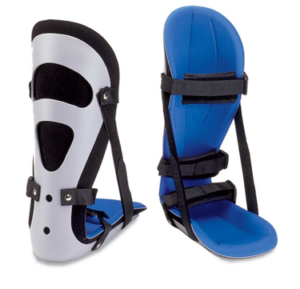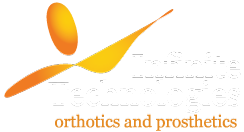Touch Bionics Trip update from the Prosthetists!
A few weeks ago, Infinite Technologies owner and Prosthetist Joe Smith, Prosthetist Nick Covington and Prosthetic Resident Amanda Nigrelli went on a trip to the Touch Bionics Lab in Hilliard, Ohio with one of our patients to learn and become certified in the iLimb and iDigits.
We asked Amanda to give us some inside scoop from the trip. Here is what she had to say:
Day 1
Joe, Nick and I arrived at the Touch Bionics lab with our patients. Myotesting was performed to find appropriate sites for controlling the prosthesis using wrist flexors and wrist extensors. Our patient worked very hard with the occupational therapist to isolate myosites to gain greater control of device. The occupational therapist reviewed the computer software, “Biosim”, with Nick, Joe, our patient and myself.
Next, a silicone glove was made for our patient over a cast of the patient’s limb that was produced from silicone casting in our Arlington office. From that, we created a hard diagnostic socket and trialed placing temporary iDigits appropriately on our patient. With that, a plastic extension was added to create equal limb lengths. Once the device was calibrated, the patient performed occupational therapy fine motor skill tasks such as stacking cups, picking up candy and small coins. This was really neat to watch because our patient picked it up so quickly!
Day 2
When we arrived back to the Touch Bionics Lab, our patient was casted for a North Western style socket by a Touch Bionics Prosthetist. We did this with a goal to achieve better suspension and comfort for our patient, whose number one concern was functionality of the prosthesis. Next, modifications were completed that day by onsite by a prosthetist. A test socket was also pulled and trimmed for patient to trial the next day. While all this was going on, our patient worked with software and completed more tasks working with the occupational therapist.
Day 3
Today, a diagnostic socket was fit to our patient. iDigits were added and the prosthesis was calibrated to our patient through computer software, Biosim. With the diagnostic socket, our patient performed and practiced more occupational therapy tasks and learned more about the software. This software is compatible with iPhone/iPod touch so that we as practioners can use it in the office as well as our patient at home. While our patient was practicing more with the prosthesis, Joe, nick and I had an opportunity to have a more in depth course on software, application of iLimb/iDigits, and any troubleshooting problems that could possibly happen down the line.
After all this, Joe, Nick and I tested out and became certified iLimb/iDigits practitioners.
Overall Experience
We want to thank all the Touch Bionics practitioners, therapists, and staff who were extremely knowledgeable, willing to teach us, and very friendly us. While in Ohio, Joe, Nick, our patient and myself learned, trained, and were provided cutting edge technology in the prosthetic world. The Touch Bionics staff provided an excellent learning environment which cultivated knowledge that will allow us to provide excellent service and technology to even more patients in the future.
Follow Up with the patient: In office definitive fitting
The definitive device was shipped to our Arlington office a week after we returned from Ohio where we were able to do the final fitting for our patient in our own office. The Definitive socket was a North Western style socket with a rigid outer frame and flexible inner frame. This was a perfect fit and our patient required no adjustments at the fitting. With the new prosthesis, our patient completed some of the occupational therapy tasks for comfort and control and was very pleased with the prosthesis. As time goes on, more follow up will be needed with our patient and the patient will continue to come back for any adjustments.
Click this link to watch a video of our patient completing occupational therapy tasks with the definitive prosthesis after final fitting: http://on.fb.me/1mZa08R
For more pictures from the trip, visit here: http://on.fb.me/1qiYkS5




